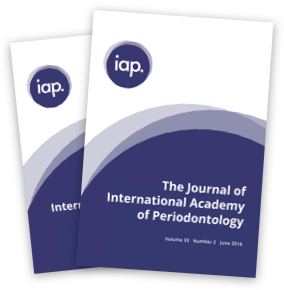January 2015 Supplement
Group B Initiator Paper: Non-surgical periodontal therapy: mechanical debridement, antimicrobial agents and other modalities
Abstract
Introduction The main goals of periodontal therapy are to achieve reductions in probing depth (PD), bleeding on probing and suppuration, to maintain or gain clinical attachment (CA) and to prevent future attachment loss (i.e., maintenance of the long-term stability of the periodontal tissues). These clinical improvements are accompanied by an ecological shift in the subgingival microbial composition, from a microbial profile related to disease to a profile compatible with health (Socransky and Haffajee, 2002; Teles et al., 2006; Feres, 2008). To achieve this microbiological goal, anti-infective treatments should reach not only deep periodontal pockets, but also shallow sites and other oral surfaces, which may harbor periodontal pathogens (Mager et al., 2003; Faveri et al., 2006a).
